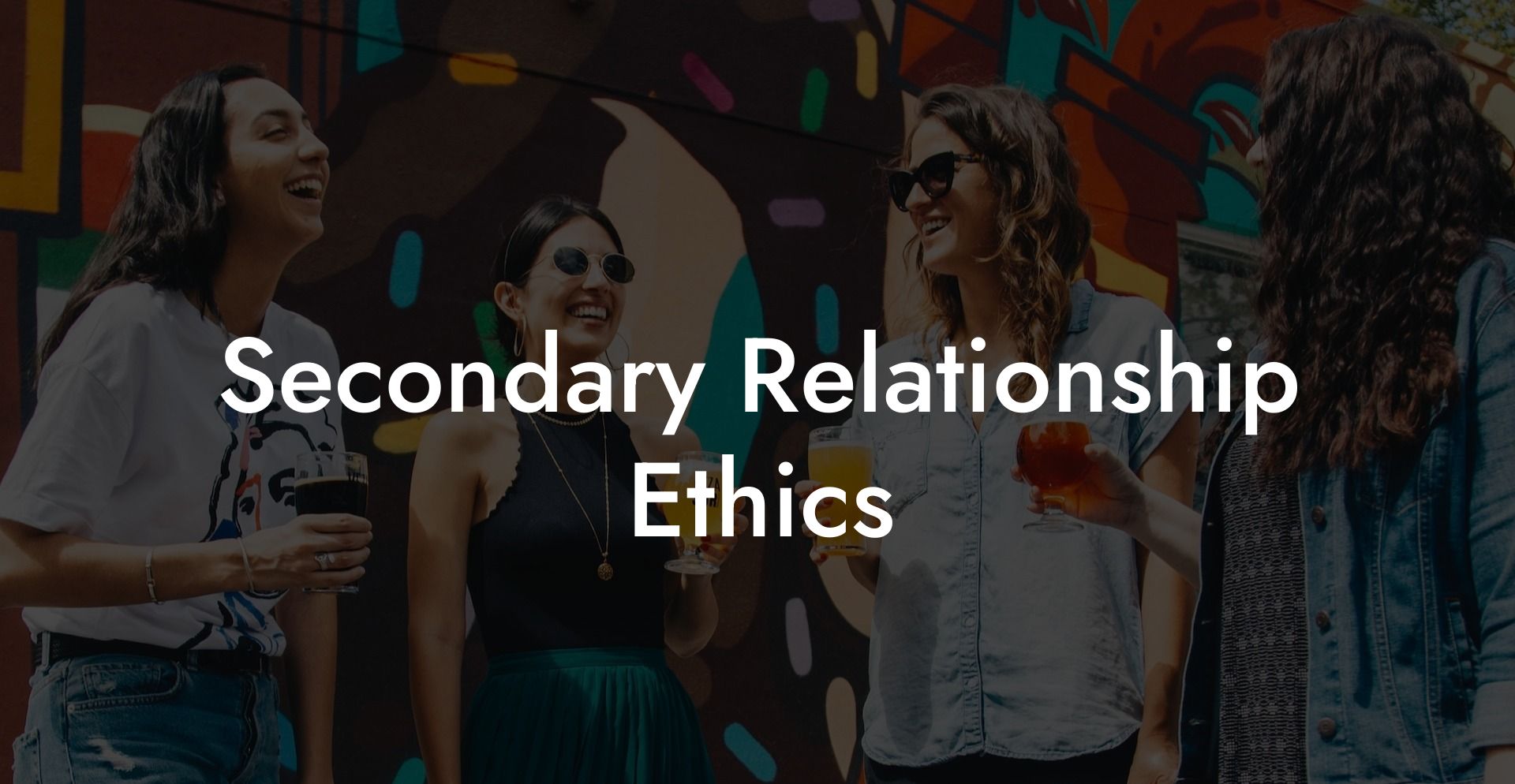Navigating the world of polyamory and maintaining a healthy secondary relationship can be an exciting and rewarding experience. With many individuals and couples exploring non-monogamy, understanding the ethics involved in managing secondary relationships is essential. In this article, we delve into the principles of secondary relationship ethics, providing you with key insights and considerations to help you navigate this unique relationship dynamic successfully.
Secondary Relationship Ethics Table of Contents
Defining Secondary Relationships
In the context of polyamory and non-monogamous relationships, a secondary relationship is one where the level of emotional commitment, time, and involvement may be less than that of a primary relationship. These relationships can vary widely, with some individuals seeing them as casual, and others considering them long-term commitments. It's important to note that relationships may evolve over time, and what may begin as a primary or secondary relationship can shift in the level of commitment, depending on the individuals' needs and desires.
1. Communication is Key
One of the most important aspects of maintaining ethical secondary relationships is open and honest communication between all parties involved. This includes discussing expectations, boundaries, and feelings with primary partners, as well as secondary partners. Make sure to have regular check-ins with everyone involved to ensure clear communication and understanding of everyone's needs.
- Establish a clear understanding of what a secondary relationship means to all parties involved.
- Discuss expectations, boundaries, and needs openly and honestly with all partners.
- Regularly check-in with all partners to ensure everyone is feeling heard and respected.
2. Respect Boundaries and Agreements
Maintaining secondary relationships often requires respecting pre-established agreements in primary relationships and understanding that these may change over time. This means sticking to the boundaries agreed upon with primary partners but also being flexible if necessary.
- Always adhere to the agreements that have been created with primary partners, including boundaries and vetoes.
- Be willing to renegotiate agreements as needed, as relationships evolve and change over time.
3. Prioritize Emotional Well-being
A crucial aspect of ethical secondary relationships is ensuring that all parties involved feel emotionally supported and valued. This can be achieved by treating all partners with equal respect and care, even though the nature of the relationships may differ.
- Ensure all partners feel supported and valued, regardless of their relationship "status."
- Be willing to address any feelings of jealousy or insecurity that may arise, either in yourself or in your partners.
4. Foster Independence and Growth
Healthy secondary relationships often thrive when all individuals involved maintain a sense of independence and personal growth. Remember that each person in a polyamorous relationship has their unique experiences, hobbies, and goals that should be nurtured.
- Encourage personal growth and independence in all partners, including secondary partners.
- Recognize that each individual has a right to explore their interests and personal development, separate from the relationship.
Secondary Relationship Ethics Example:
Emma and Tom have been in a committed primary relationship for several years and have recently decided to explore polyamory. They agree to maintain a hierarchical structure, with their relationship as the primary focus and any additional relationships as secondary.
Their agreed-upon boundaries include discussing new relationships with each other before engaging in any physical or emotional intimacy. Tom and Emma also agree to prioritize each other's emotional well-being, regularly checking in on feelings of jealousy or insecurity and working through them together.
When Emma begins seeing Sarah as a secondary partner, she communicates her expectations and needs in this relationship and respects the boundaries she and Tom created. Emma also ensures that Sarah feels valued and cared for as a secondary partner, addressing any potential feelings of jealousy or insecurity that could arise. Tom and Emma continue to foster their personal growth and independence, each exploring their interests and goals both inside and outside of their relationship dynamics.
Understanding and implementing the principles of secondary relationship ethics can ensure a healthy and rewarding polyamorous dynamic. By prioritizing communication, respecting boundaries, and nurturing emotional well-being, your secondary relationships will thrive alongside your primary partnerships. If you found this guide helpful, please share it with others and explore more resources on The Monogamy Experiment for insights into non-monogamy, monogamy, and polyamory. Together, let's cultivate a community of understanding, support, and growth.













